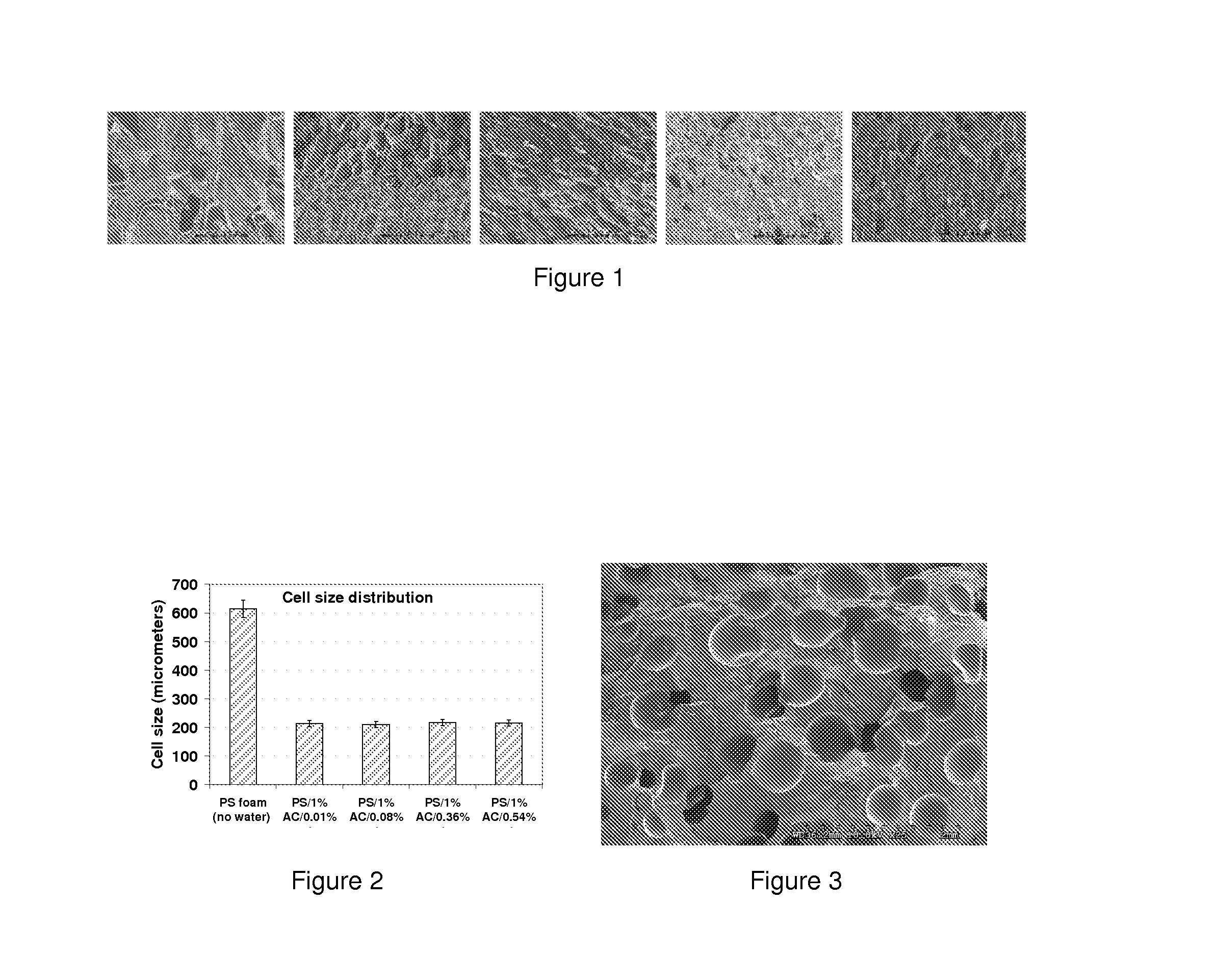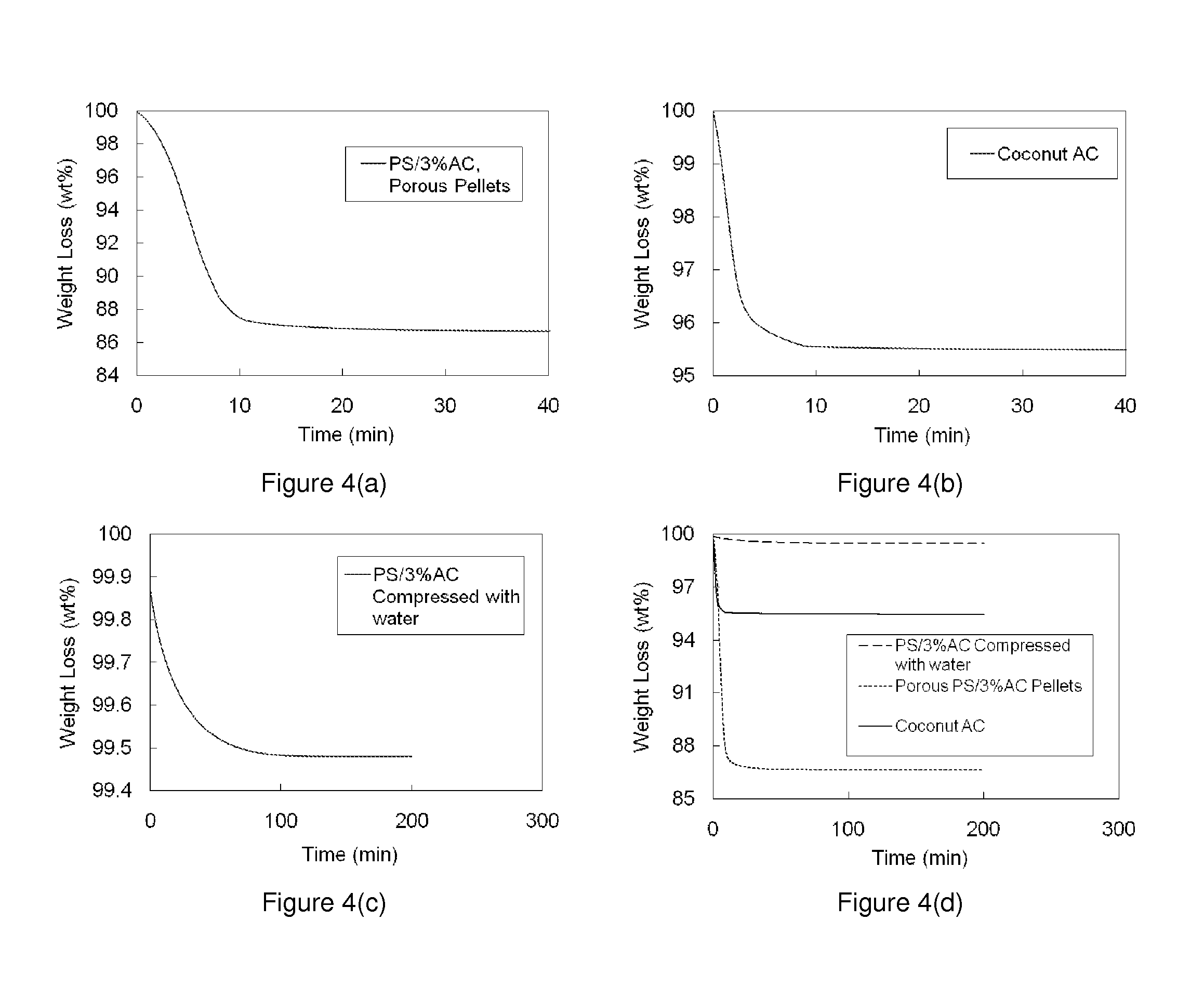Surfactant-free synthesis and foaming of liquid blowing agent-containing activated carbon-nano/microparticulate polymer composites
- Summary
- Abstract
- Description
- Claims
- Application Information
AI Technical Summary
Benefits of technology
Problems solved by technology
Method used
Image
Examples
example 1
[0085]Activated carbon (AC) and polystyrene (PS) pellets were compounding in preferred concentration, e.g., the weight ratio of AC / PS ranged from 20% to 0.01%, and pelletized via extruder. The AC / PS pellets were suspended in water and then transferred into autoclave at temperature ˜120° C. for 2 min to 12 hours. As-prepared samples contained 0.5 to ˜13% of water for 3% of AC / PS composite. The amount of absorbed water in AC / PS can be adjusted to the certain concentration using a convection oven at ˜40° C. to remove water.
example 2
[0086]47 g of PS pellets were dissolved in 53 g of styrene, 0.25 g of AIBN, 0.15 g of BPO and 3 g of activated carbon. The mixture was kept overnight at room temperature until all PS pellets were dissolved. 200 ml of water was added into the viscous solution (around 100 g) and then the mixture was transferred to an autoclave and then polymerized at 120° C. under 100 psi for 2 min to 12 hours to achieve complete reaction. Finally, the suspension was cooled to room temperature. The black product was crushed into small fragments (˜5 mm) and stored in water. Water on the surface of PS / AC beads was removed before foaming.
example 3
[0087]47 g of PS pellets were dissolved in 53 g of styrene, 0.25 g of AIBN, 0.15 g of BPO and 3 g of activated carbon. The mixture was kept overnight at room temperature until all PS pellets were dissolved. The mixture was polymerized at 120° C. under a high stirring rate (800 rpm) for 12 hours at atmosphere. The black product was suspended in 200 ml of water and then transferred to an autoclave and post-cured at 120° C. under 100 psi for 2 min to 12 hours. The black product was crushed into small fragments (˜5 mm) and stored in water. Water on the surface of PS / AC beads was removed before foaming.
PUM
| Property | Measurement | Unit |
|---|---|---|
| Fraction | aaaaa | aaaaa |
| Fraction | aaaaa | aaaaa |
| Size | aaaaa | aaaaa |
Abstract
Description
Claims
Application Information
 Login to View More
Login to View More - R&D
- Intellectual Property
- Life Sciences
- Materials
- Tech Scout
- Unparalleled Data Quality
- Higher Quality Content
- 60% Fewer Hallucinations
Browse by: Latest US Patents, China's latest patents, Technical Efficacy Thesaurus, Application Domain, Technology Topic, Popular Technical Reports.
© 2025 PatSnap. All rights reserved.Legal|Privacy policy|Modern Slavery Act Transparency Statement|Sitemap|About US| Contact US: help@patsnap.com



